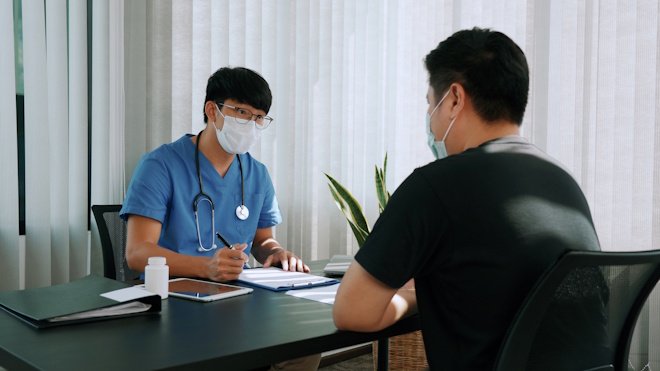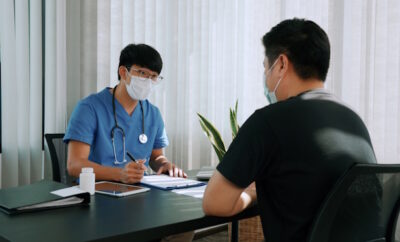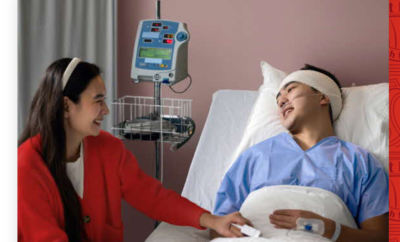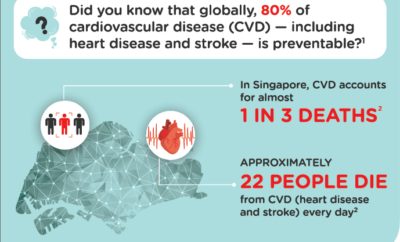
Insights + interviews
Is Screening at 40 Too Late? Closing Singapore’s Pre-Diabetes Gap
Singapore’s War on Diabetes is one of our most significant public health movements.
Launched in 2016, it brought together healthcare providers, communities, and citizens to tackle a disease that already affects over 400,000 people in Singapore and could reach one million by 2050. The Healthier SG programme builds on this vision by encouraging earlier screening and prevention.
Yet, a key group remains overlooked — adults in their 20s and 30s. Under Screen for Life, subsidised screening only starts at 40. By then, many have already crossed the critical window to reverse pre-diabetes through simple lifestyle changes.
The Hidden Epidemic Before 40
Diabetes is affecting younger ages. The National Population Health Survey 2021 found that one in three adults aged 18 to 74 has raised blood-sugar levels or diabetes.
Obesity among those aged 18 to 39 almost doubled between 2010 and 2021, and this rise is closely linked to reduced insulin sensitivity and a higher risk of diabetes.

The connection between obesity and diabetes shows how lifestyle factors are driving metabolic diseases earlier in life. This trend is echoed in the Diabetes Perception Report 2024, conducted by NUS’s Institute for Public Understanding of Risk and Diabetes Singapore.
The findings paint a clear picture of why early detection matters:
- There is increasing prevalence of diabetes among individuals under 40.
- Almost 40 percent of health screening participants had pre-diabetes.
- More than half of those with diabetes were unaware of their condition.
- Nearly 70 percent of people with pre-diabetes believed they did not have it.
- Among those who thought they were healthy, almost half actually had diabetes or pre-diabetes.
This “awareness gap” shows how deeply invisible pre-diabetes remains, particularly for younger adults who may feel healthy and asymptomatic. By focusing screening only after 40, we miss a critical intervention point when lifestyle changes could make the greatest difference.
Beyond Awareness: Rethinking Accessibility
Closing the awareness gap is only the beginning. Over the past eight years, the War on Diabetes has made significant strides in public education. Campaigns under Healthier SG and Screen for Life have encouraged more Singaporeans to talk about blood sugar, risk factors, and healthy living.
Community organisations such as Diabetes Singapore have reached thousands through free screenings, exhibitions, and outreach events, helping people understand their health risks. Yet, awareness does not always translate into action. Even among those who knew they were at risk, many had never taken a blood-glucose test to confirm their diabetes status.
The gap is not just about knowledge, but also about access. Traditional clinic-based screening models expect individuals to take the first step, but this assumes both time and motivation — things that are often in short supply for younger adults who feel healthy.
If screenings remain locked behind clinic doors or working-hour appointments, awareness alone will not change outcomes. We need to meet people where they are.
To close this gap, we must expand access points for screening beyond clinics. Employers can organise wellness screenings at work, and community pharmacies can offer quick blood-glucose checks. Once identified, individuals need ongoing support to manage their condition effectively.
Digital health tools such as the Dexcom G7, a next-generation real-time continuous glucose monitoring system launched in Singapore, enable people to monitor glucose levels discreetly and track their results on compatible smart devices—making daily diabetes management more convenient while supporting the nation’s broader push toward digital health. Realising this vision requires cooperation between policymakers, providers, and industry to make early detection and sustained care both simple and sustainable.
How DKSH Is Enabling Early Intervention
At DKSH, we believe prevention should be part of everyday life. We work closely with partners and health authorities to make screening and treatment easier to access.
We have collaborated with technology leaders like Roche to bring digital diabetes management solutions to Asia, making glucose monitoring simpler and more consistent. Most recently, we helped secure approval for Mounjaro (tirzepatide) KwikPen, expanding treatment options for people living with type 2 diabetes and obesity.

These initiatives show how public health campaigns, industry partnerships, and innovation can work hand-in-hand. By bringing screening closer to people’s lives — whether through digital tools, workplaces, or community outreach — we can turn awareness into action and build a more accessible, preventive healthcare ecosystem.
A Collaborative Future for Prevention
The next phase of Singapore’s War on Diabetes will depend on how effectively we bridge accessibility, innovation, and behaviour. Early screening is not only a medical priority but a long-term investment in our people and our healthcare system.
By closing the pre-diabetes gap, we can help future generations live longer and healthier lives. The ultimate goal is not merely to manage disease, but to prevent it entirely. With the right partnerships, that future is within reach.
Article contributed by Reuben Ong, Vice President, Healthcare, DKSH
Picture of Mounjaro (tirzepatide) KwikPen attributed to DKSH






